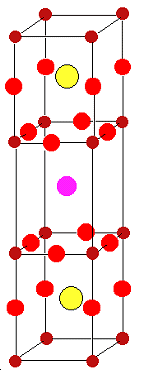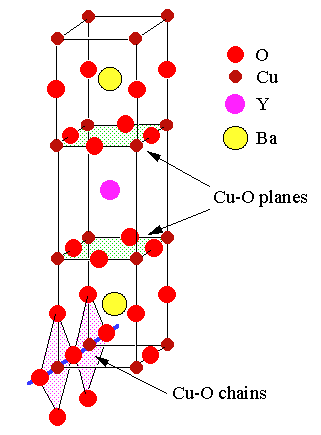
A magnet levitating over a piece of liquid nitrogen-cooled YBCO
Superconductivity is a phenomenon whereby a number of pure metals and alloys offer no resistance whatsoever to the passage of electrical current below a certain critical temperature. If a current is set up in a closed loop of such a material, in principle it will continue to flow forever. This means it is possible to pass electrical power through such a material without losing any energy in the process. Superconductivity was first discovered in mercury in 1911, and was rapidly followed by other materials such as lead, niobium and a few alloys such as V-Si. The critical temperature is a characteristic of the material in question, and for many years after the discovery of the first superconductor all known superconducting materials had thresholds around a few degrees Kelvin. This meant that in order to observe the effect, the material had to be cooled using liquid helium, which is both extremely costly and difficult to handle.
The story changed dramatically in 1986, when J. Georg Bednorz and K. Alex Müller produced a material, La2CuO4, with a threshold temperature of 35K. This material is different from the previous classes of material in that it has a complex crystal structure made from several components, based around copper oxide units. This discovery earned Bednorz and Müller a Nobel prize, and was followed a year later by the discovery, by Paul Chu and colleagues, of another material, YBa2Cu3O7 (often abbreviated to YBCO or 1-2-3 from the ratio of its metal atoms) which had an even higher threshold temperature of around 92K. This meant for the first time that a material exhibited superconducting behaviour at temperatures above that of liquid nitrogen (77K), which is much cheaper and easier to handle than liquid He.

A magnet levitating over a piece of liquid nitrogen-cooled YBCO
More so-called 'high temperature superconductors' were rapidly discovered in the following few years, pushing the critical temperature up to around 130K, and for a time it looked as though the dream of a room temperature superconductor was soon to be realised. Thresholds close to room temperature would bring superconducting phenomena within range of relatively easy technology. Some of the applications that might result include levitating trains, cheaper and more powerful medical scanners, faster computers, and power transmission over long distances without energy loss.
 |
 |
| YBa2Cu3O6 | YBa2Cu3O7 |
The theory of low temperature superconductivity has been well understood since the so-called BCS theory was put forward in 1957. It is based on a peculiarity of the interaction between 2 electrons in a crystal lattice. However BCS theory does not explain high temperature superconductivity, and its precise mechanism is still a mystery. What is known is that the composition of the copper-oxide materials has to be precisely controlled if superconductivity is to occur. YBa2Cu3O7 can be regarded as being derived from semiconducting YBa2Cu3O6 by doping with O2 charge carriers formed by oxidation. However the crystal is not completely saturated with oxygen atoms, and there are a number of vacancies in the lattice. Thus the actual superconducting material is often written as YBa2Cu3O7-d, where d must be less than 0.7 if the material is to be superconducting. The reason for this is still not clear, but it is known that the vacancies occur only in certain places in the crystal, the copper oxide planes and chains, giving rise to a peculiar oxidation state of the copper atoms, which somehow leads to the superconducting behaviour.
Unfortunately, however, after the initial optimism and euphoria which accompanied the discovery of high temperature superconductivity, since the late 1980's no further dramatic increases in the threshold have occurred and the critical temperature seems to be stuck around 150K. As a result, some people have said that 'high temperature superconductivity' is a misnomer, and it should really be renamed 'just-a-bit-higher-temperature-than-before superconductivity'! But this is still very much an active area of research, and scientists around the world are still actively seeking the elusive room temperature superconductor.